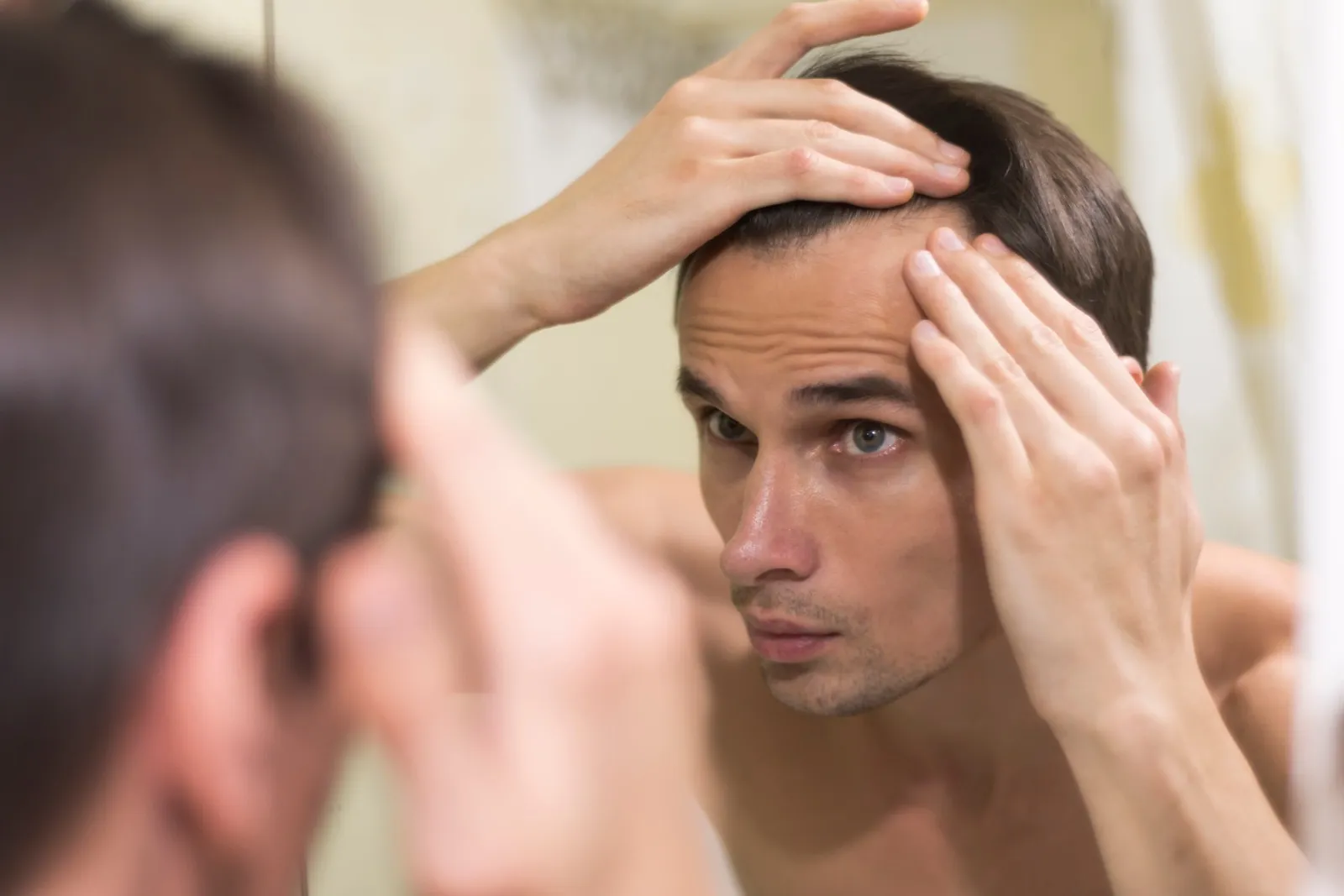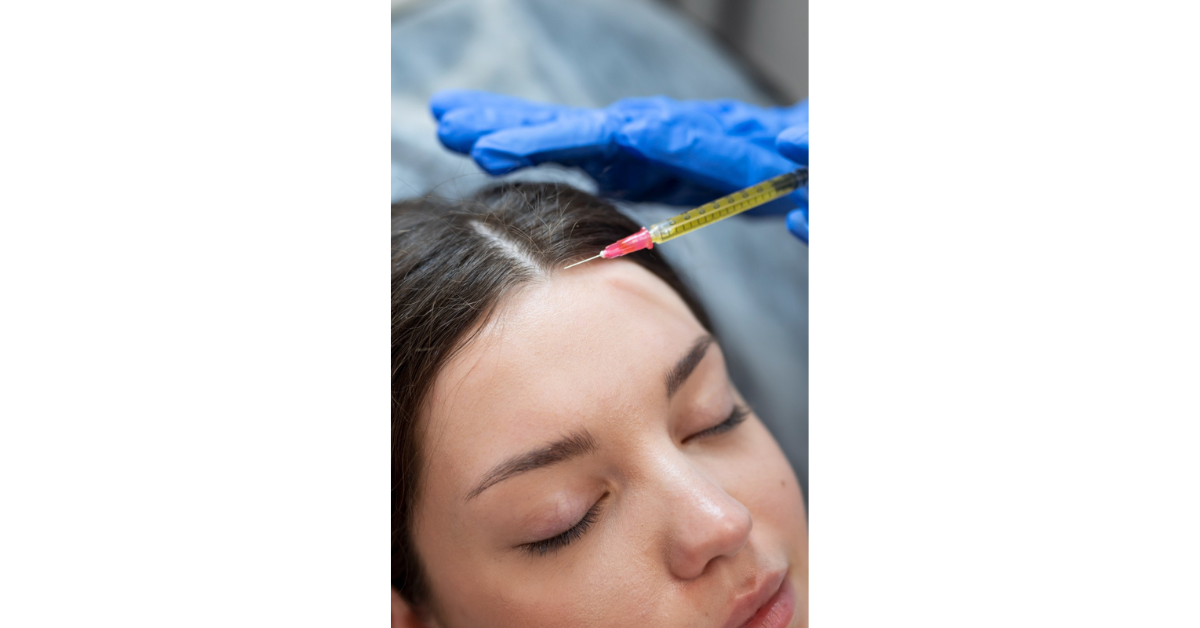Blogs
Home
Blogs
Types of Hair Loss: Causes, Symptoms, and Treatment Options
Hair loss can be a distressing experience for both men and women. While it is common to shed some hair every day, excessive hair loss can be a sign of an underlying issue. Understanding the different types of hair loss is crucial for proper diagnosis and treatment. In this article, we will explore the various types of hair loss, their causes, symptoms, and available treatment options.

Androgenetic Alopecia (Male and Female Pattern Baldness)
Androgenetic alopecia, also known as male-pattern baldness or female-pattern hair loss, is the most prevalent form of hair loss. It is characterised by a gradual thinning of hair on the scalp, leading to a receding hairline in men and overall hair thinning in women. Genetic predisposition and hormonal imbalances are the primary causes of androgenetic alopecia. In men, the hormone dihydrotestosterone (DHT) binds to hair follicles, causing them to shrink and produce finer, shorter hairs. In women, hormonal changes during menopause or pregnancy can trigger hair loss.
Symptoms: gradual hair thinning, receding hairline, and hair loss in specific patterns.
Treatment: Over-the-counter medications such as minoxidil and prescription drugs like finasteride can slow down hair loss and promote regrowth. Hair transplantation is another option for those seeking a permanent solution.
Alopecia Areata
Alopecia areata is an autoimmune condition in which the immune system mistakenly attacks the hair follicles, leading to patchy hair loss. It can affect people of all ages and often begins in childhood. The exact cause of alopecia areata is unknown, but it is believed to be a combination of genetic and environmental factors.
Symptoms: patchy hair loss on the scalp, eyebrows, eyelashes, or other body hair.
Treatment: There is no known cure for alopecia areata, but treatment options include corticosteroid injections, topical immunotherapy, and minoxidil. Wigs, hats, or scarves can be used to cover areas of hair loss.
Telogen Effluvium
Telogen effluvium is a type of hair loss characterized by excessive shedding of hair. It occurs when a significant number of hair follicles prematurely enter the resting (telogen) phase of the hair growth cycle. This condition is often triggered by physical or emotional stress, hormonal changes, nutritional deficiencies, medication side effects, or underlying medical conditions.
The hallmark of telogen effluvium is diffuse hair shedding throughout the scalp, rather than specific bald patches. Hair loss usually occurs around three months after the triggering event or situation.
Treatment for telogen effluvium primarily involves identifying and addressing the underlying cause. Stress management techniques, a balanced diet, and addressing any nutritional deficiencies are essential. In some cases, medications such as minoxidil may be prescribed to promote hair regrowth.
Treatment: Identifying and addressing the underlying cause is crucial for resolving telogen effluvium. Managing stress, improving nutrition, and treating any medical conditions can help restore hair growth. In severe cases, minoxidil may be prescribed.
Traction Alopecia
Traction alopecia is caused by constant pulling or tension applied to the hair over a prolonged period. It is commonly seen in individuals who frequently wear tight hairstyles like braids, ponytails, or extensions. The continuous strain weakens the hair follicles, leading to hair loss.
Symptoms: hair loss along the hairline or areas subjected to tension.
Treatment: The primary treatment for tract alopecia is to avoid hairstyles that exert excessive tension on the hair. In most cases, hair will regrow once the pulling stops. In severe cases, hair transplantation may be considered.
Trichotillomania
Trichotillomania is an impulse control disorder characterised by a recurrent urge to pull out one’s hair, often resulting in noticeable hair loss. It is a psychological condition that can be triggered by stress, anxiety, or boredom. The act of pulling out hair provides a sense of relief or gratification.
Symptoms: Patchy hair loss, broken hair of varying lengths.
Treatment: Trichotillomania is typically treated with a combination of therapies, including cognitive-behavioral therapy (CBT), habit reversal training, and medication for underlying mental health conditions. Supporting groups and counseling can also be beneficial.
Hair loss can have a significant impact on one’s self-esteem and overall well-being. Understanding the different types of hair loss is crucial for determining the appropriate treatment options. Androgenetic alopecia, alopecia areata, telogen effluvium, and tract alopecia are some of the most common forms of hair loss. While some types may be temporary and reversible, others may require long-term management. Consulting a healthcare professional or dermatologist is essential for accurate diagnosis and personalized treatment plans. Additionally, maintaining a healthy lifestyle, managing stress levels, and using gentle hair care practices can contribute to maintaining overall hair health. Remember, seeking early intervention and adopting a comprehensive approach to hair care can help address hair loss concerns effectively. You can consult the best hair specialist in Indore for hair treatment.




